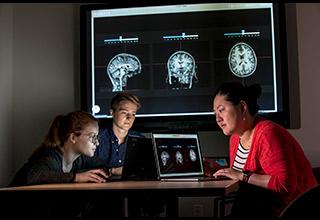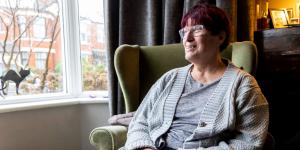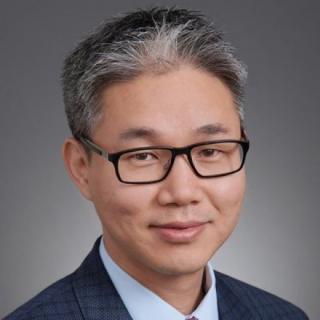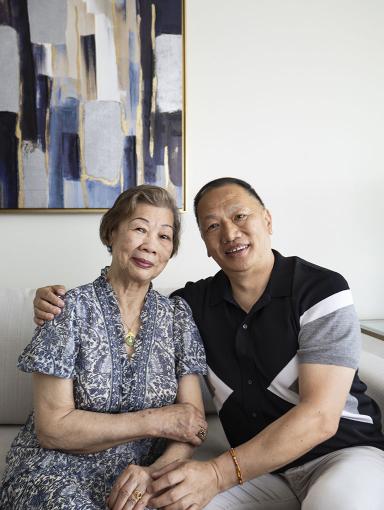Why Measuring Frailty in Older Adults Translates to Better Health Care
Discover how a frailty score helps doctors make better clinical decisions and what you can do to influence your frailty level.

Your chronological age can tell doctors a lot about your health when you’re young. While there are exceptions, people in their 20s tend to be healthy and have a much smaller variation in their overall health status than older adults. That’s usually true for middle-aged adults too.
But when you reach older adulthood, age tells doctors less. Some 80-year-olds are highly functional and active, and some 80-year-olds have difficulty getting out of their chair or bed.
That’s where measuring frailty comes in. Frailty is a state of vulnerability that results from your body’s loss of built-in reserves as age-related changes accumulate. It highlights your physiological age due to changes in your body over time, making you more vulnerable.
Geriatricians are always thinking about frailty or vulnerability — as experts in treating older adults, they can recognize it intuitively. But one doctor’s perception of frailty isn’t exactly the same as another’s. Additionally, there are more than a dozen validated tools for doctors to choose from to measure frailty, each with its own measurement scale.
I believe that we can provide better health care to older adults by incorporating frailty into clinical care, research, and population health. Driven by that belief, I founded the Frailty Research Program at the Harvard Medical School-affiliated Hinda and Arthur Marcus Institute for Aging Research. At the Marcus Institute, we are conducting frailty research that aims to study and improve physical health and function in older adults.
Standardizing how we measure frailty opens the door to better clinical decision-making. On an even larger scale, claims data makes it possible for health care institutions to estimate frailty levels for all their patients, and then proactively target their most at-risk patients with interventions that can slow the progression of frailty.
Standardizing how we measure frailty
There are two main concepts of frailty today. The first is the physical frailty phenotype, which measures frailty by assessing five key criteria: slow gait speed, weakness, unintentional weight loss, low activity, and exhaustion.
The second concept is the deficit accumulation approach to measuring frailty. The idea is that as people age, they develop health deficits that can contribute to frailty. Some deficits could include hypertension, cognitive impairment, or difficulty walking. You can then count those deficits to quantify how frail a person is.
The problem is that there’s no hard rule about what deficits you should be counting, resulting in the creation of many frailty indexes. Some use self-reported surveys, some use blood test markers, and others use comprehensive exam findings. Many of the indexes were created through research studies, causing researchers to include deficits specific to the context of their studies that doctors don’t regularly measure in their patients.
Seeing this gap, I developed the Senior Health Calculator, an online frailty calculator that has been incorporated into the electronic medical records at Beth Israel Deaconess Medical Center, a teaching affiliate of Harvard Medical School. This calculator is an adaptation of the deficit accumulation approach, but the score is based on health items that are already routinely collected during annual physicals or other exams — that’s what makes it different from previous indexes.
Doctors are already asking patients about the criteria included in the Senior Health Calculator, such as whether they have a history of diabetes, dementia, or falls within the past year. That means that incorporating the Senior Health Calculator into appointments doesn’t require as much time and effort as other frailty indexes. It is designed to be feasible and convenient for doctors to use and calculate their patients’ frailty scores.
So what can doctors do once they have someone’s frailty score? One of the key benefits of having this score is that it can help them make better clinical decisions.
How a frailty score can improve your medical treatment
If you go to a hospital for elective surgery, your frailty level can make a huge difference in your surgical outcome. With the Senior Health Calculator, we can calculate a frailty score before elective surgeries, such as heart valve procedures, and predict the likelihood of your recovery. If your expected recovery is poor, we can reconsider whether surgery is your best course of action. You may need prehabilitation, or a “tune-up” before your surgery, to maximize the chance of recovery.
We can also educate you on the surgical risks that you may face because of your frailty level. We may want to confirm that the surgery is in your best interest based on what your goals are or what your quality of life will be afterward.
Frailty scores are also extremely helpful for stressful treatments such as chemotherapy. Chemotherapy targets cancer cells, but can also affect many other organ systems. Because of that, you may not be able to function very well while you’re receiving chemotherapy if you go into it with a high level of frailty. If your oncology doctor knows this, they may decide to reduce the intensity of the chemotherapy or arrange additional supportive services so you can maintain a better quality of life as you receive your treatment.
Frailty scores have value in primary care and outpatient settings. Primary care doctors can use a frailty score to keep you informed about your frailty level and encourage lifestyle changes that might change the course or prevent the development of frailty.
Modifiable lifestyle factors that affect frailty
Although your risk of frailty increases with age, frailty is not inevitable! Frailty is also reversible in many cases. Depending on your frailty score, your doctor may recommend a treatment plan that includes changing modifiable lifestyle factors.
Geriatricians or a multidisciplinary team of geriatric care experts can look at every aspect of your health and surrounding environment and come up with an individual plan for you through a comprehensive geriatric assessment.
Here are some of the lifestyle factors that geriatricians consider when they’re treating frailty:
- Physical activity: Exercise is the most important component of a frailty treatment plan. Pre-frail or mildly frail individuals can often engage in regular exercise programs, but people who are more frail may require help from a physical therapist.
- Nutritional supplements: Protein intake, in particular when combined with exercise, can help with muscle strength, muscle volume growth, and reversing some components of frailty.
- Medications: Some medications can increase the risk of falling, injury, or cognitive impairment, meaning their harm may outweigh their benefit. In those cases, stopping medications may be an important part of your frailty treatment plan. On the other hand, chronic conditions like diabetes or heart failure can contribute to frailty if they’re poorly controlled. In those cases, adding medications to control a disease may help with frailty.
- Social activity: Even with the same level of frailty or disability, people with purpose have better outcomes. Leaning into a social support system, whether that’s through family, friends, a religious or spiritual community, or elsewhere, can be an important part of managing frailty.
- The home environment: If you do have frailty, home hazards can increase your risk of falling and becoming injured. Changing your home environment to prevent falls at home can reduce the chances of that happening. Modifying your environment at home, such as installing grab bars in the bathroom, can help you maintain independence.
Using Medicare claims data to estimate frailty on a large scale
On top of measuring frailty in a clinical setting with the Senior Health Calculator, my frailty research has led me to develop a claims-based frailty index algorithm, which uses insurance claims data like Medicare data to estimate a person’s frailty level. My motivation was to capture people’s frailty level without a clinical assessment by using existing databases. By doing so, we are able to estimate frailty at the population level.
By looking at medical codes of how people use health care services, diagnoses, medical equipment like walkers and wheelchairs, oxygen supply, their use of ambulance transportation, and more, we can gain insight into their frailty level. The predictive algorithm of the claims-based frailty index uses machine learning to estimate how frail a specific person is by combining all of the medical codes they have experienced in the past year as a representation of their functional impairment.
When health care institutions can calculate the frailty level of every person in their health care system, it can help them identify their frailest patients to proactively target for interventions. It also opens up opportunities for researchers to plan resource allocation and develop specialized programs.
Hebrew SeniorLife research highlights the value of measuring frailty
People with frailty are often underrepresented in clinical trials. But those clinical trials are what determine whether procedures and medications are safe to use. What if certain procedures and medications are safe for the general population, but not for those with frailty?
Despite being underrepresented in clinical trials, there is no shortage of data on people with frailty in Medicare records. Researchers at the Marcus Institute, including myself, are using the claims-based frailty index algorithm to determine whether medications and procedures pose greater risks to people with frailty based on their outcomes.
If we determine a medication or procedure is safe for frail older adults, it can give clinicians peace of mind in offering them that treatment. On the other hand, if we find that people with frailty aren’t tolerating treatment well, that can inform doctors that it may pose risks.
Separately, I am working with a research team from the UMass Amherst Institute for Applied Life Sciences and Butlr Technologies Inc. to develop a contactless, in-home assessment tool for frailty using body heat sensing technology in the form of a wall or ceiling-mounted heat sensor that doesn’t jeopardize privacy.
We’re developing a heat sensor-based frailty detection algorithm so that we can monitor key movements that can indicate frailty in older adults, such as how fast they’re moving, how often they get up, and how quickly they can stand up from their chairs. These are all elements of frailty we assess in clinics, but we will be using the heat patterns from the sensors so it can take place in their home environment instead.
Get involved in a research study
The examples above barely scratch the surface of the groundbreaking research Marcus Institute researchers are conducting every day — and you may be able to help! By deciding to participate in a research trial, you can help advance science by contributing to a growing body of knowledge about healthy aging.
Want to learn more? See if you’re eligible to participate in one of the Marcus Institute’s research studies today.
Blog Topics
Learn More
Research on Aging
At the Hinda and Arthur Marcus Institute for Aging Research, Harvard Medical School-affiliated researchers are working to uncover answers to some of the most pressing challenges of aging.





